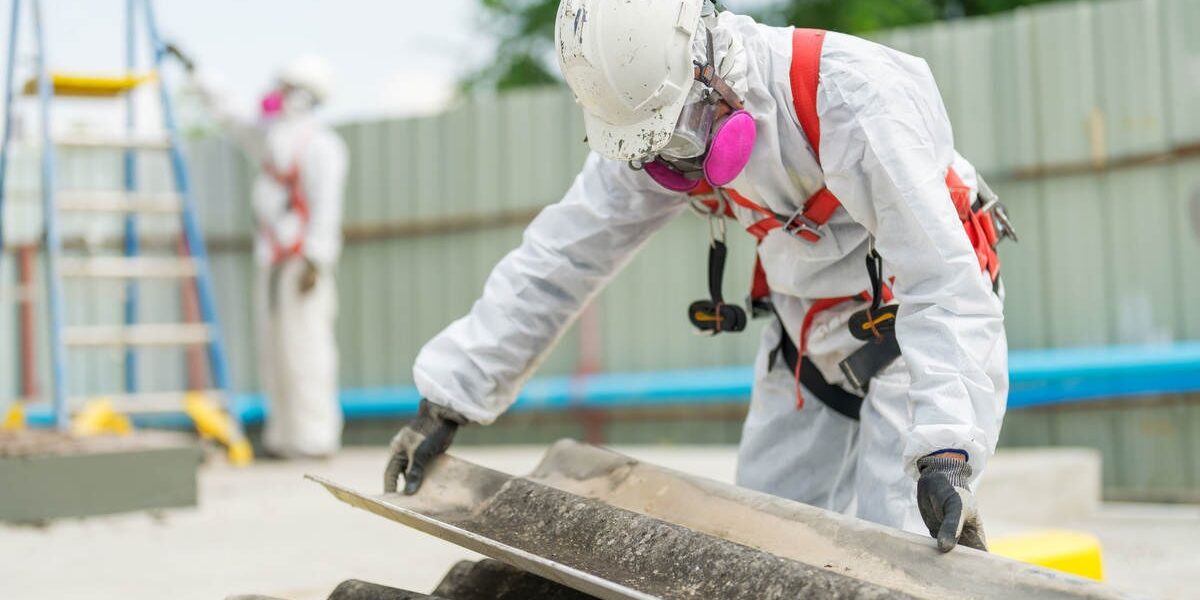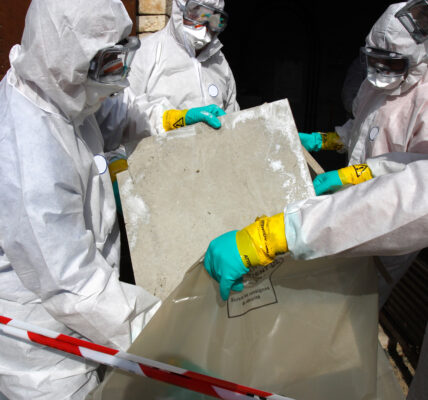Asbestos, a standard construction material used during the 20th century, played a significant role in the construction of residential and commercial buildings in the UK and worldwide. From reinforcing cement to adhesives, insulating materials to corrugated roofing, asbestos found its way into various construction components, including water tanks. This article will look into asbestos water tanks, providing essential information about this material and guidance on handling it in your homes.
Understanding Asbestos and Its Properties
Asbestos is an inert and fibrous material known for its non-reactive nature. It was highly favoured in the construction industry before its associated health risks were discovered. Asbestos possessed several qualities that made it an ideal construction material, including water and flame resistance. Asbestos water tanks, reinforced with asbestos cement, were standard in buildings of that era. The fibrous and non-fibrous forms of asbestos can be found in the same deposits, potentially due to variations in the heat and pressure conditions during the mineral’s formation.
The Superior Properties of Asbestos
Asbestos boasts numerous physical properties that set it apart from conventional construction materials. It exhibits exceptional tensile strength, surpassing that of steel. It is thermally stable, resistant to fire and heat, and has excellent electrical resistance. Moreover, asbestos effectively binds with other insulating materials, making it an ideal choice for construction. The combination of thermal resistance and strength made asbestos a preferred material for water tanks.
The Risk of Asbestos Fibres in Water
Asbestos fibres, being odourless and tasteless, can potentially seep into water from asbestos water tanks. If this water is used for drinking or washing clothes, the asbestos fibres may enter the digestive system, causing health issues and even getting lodged in clothing. These fibres possess great strength and flexibility, enabling them to be spun into materials with electrical, flame-resistant, and heat-resistant properties for construction purposes.
Health Risks Associated with Asbestos Exposure
Despite its widespread use in the 20th century, asbestos poses significant health risks. The primary danger lies in the release of asbestos fibres into the air. Even a single fibre of asbestos can cause severe damage to the human body, with the effects often not manifesting for up to two decades. Individuals with the most asbestos exposure are at the highest risk of developing asbestos-related diseases.
Health Problems Caused by Asbestos Water Tanks
Asbestos-containing materials, whether friable or non-friable, can be highly hazardous when disturbed, damaged, or weathered over time. The release of fibres from these materials can lead to various diseases, including mesothelioma, lung cancer, asbestosis, liver damage, stomach cancer, bladder cancer, urinary tumours, and pleural or diaphragm plaque. Friable asbestos, often found in the insulation board attached to asbestos water tanks, poses an even greater risk and can be challenging to remove.
Occupational Exposure to Asbestos
People involved in the mining and milling of crude asbestos and those manufacturing asbestos products like asbestos cement were among the first to suffer from asbestos-related diseases. Other occupations at considerable risk of asbestos exposure include piping fitters, construction workers, electricians, carpenters, plumbers, and tradespeople working with asbestos-containing materials. Family members and relatives of these workers were also indirectly exposed to asbestos through contaminated work clothes.
Common Locations for Asbestos
Asbestos can be found in public buildings constructed during the 1960s, including schools and other structures. It is commonly present in ceiling tiles, pipe insulation, floor tiles, roofing materials, and, as mentioned earlier, water tanks. Residential properties built before the 1990s may also contain asbestos in their construction components. It is important to note that not all water tanks contain asbestos, but those installed before the 1980s are more likely to be constructed with asbestos-containing materials.
Identifying Asbestos Water Tanks
Identifying whether a water tank contains asbestos can be challenging, as visual inspection alone may not provide conclusive results. Asbestos cement water tanks typically have a smooth, grey, or white external surface and a corrugated internal surface. However, it is best to consult a professional asbestos surveyor or inspector to identify the presence of asbestos in your water tank accurately. They can conduct a thorough inspection and collect samples for analysis in a certified laboratory.
Dealing with Asbestos Water Tanks
If you have an asbestos water tank on your property, it is important to respond appropriately to ensure your safety and the safety of others. Here are some steps to consider:
Consult an expert: For safety, it’s best to hire a certified asbestos professional or surveyor to assess the condition of the tank and advise on appropriate action.
Avoid disturbing the tank: When asbestos materials are disturbed or damaged, they release fibres into the air. You must avoid any acts that could cause the tank to corrode or release fibres, such as drilling, cutting, or abrasive cleaning.
Regular inspections: If the water tank is in good condition and not showing signs of deterioration, routine inspections by professionals can help monitor its condition and catch any changes that may require action.
Encapsulation or sealing: In some cases, encapsulating or sealing the asbestos-containing materials may be possible. This involves applying a protective coating, preventing the release of fibres.
Removal and replacement: If the water tank is damaged, or if you wish to eliminate the risk of asbestos exposure, replacement the tank with a modern, non-asbestos alternative may be necessary. Always hire licensed professionals experienced in asbestos removal for this task.









